The girls and I are having so much fun with this Preschool Art series. I love the inspiration it is providing me in coming up with fun new activities, and I love all the support, feedback and excitement I am hearing from you all in response! This week, we continued our studies, moving on from Matisse and his vivid colors and cutouts to the Cubist-style of Picasso Portraits.
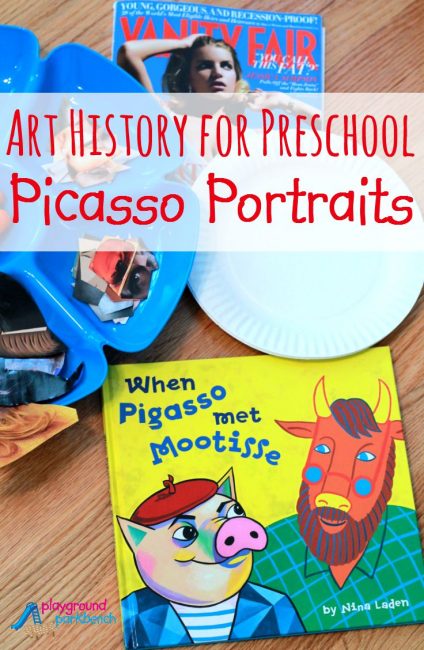
Cubism and Picasso Portraits
Having started our Art for Preschool series with Matisse, When Pigasso Met Mootisse was the perfect book to share with the Ms to move on to our next phase in art history: Picasso and Cubism. I loved that Big M recognized some of the spoof’s on Matisse’s famous works in the book. The book also tells a great story about artists as contemporaries, rivals and collaborators, showing different styles of art, and allowing for direct comparison, in a child-friendly manner, side by side. I also love that it includes factual biographical information on both artists in the back of the book.
Making Picasso Portraits
After reading the story to the girls, we flipped back through the pages and end covers to talk about the difference in style, especially in portrait paintings between the two artists. We also examined some of Picasso’s more famous cubist-style portraits on my iPad.
Big M quickly noted she liked the bright colors, and thought Picasso made “funny faces.” She was very excited to learn we were going to make our own ‘funny faces’ as well!
Supplies
As with our Matisse Cutouts, we were doing this project at our new house, which we haven’t officially moved into yet – and supplies were very basic.
Supplies
Paper plates (Dollar Store, plain white variety)
Old fashion magazine
Glue sticks
Sorting tray (Dollar Store appetizer/dip tray)Scissors
Cost: Free – Less than $5
Prep Time: Less than 15 minutes
Clean-Up Time: Less than 5 minutes
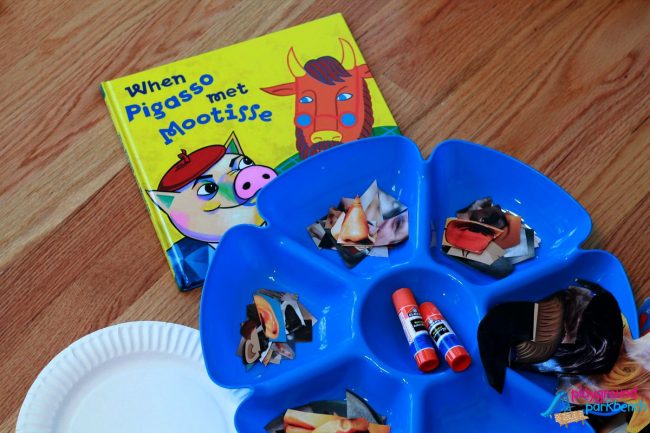
I highly recommend using a Fashion magazine for this project, as they tend to have a lot more full page, face close-ups, which is exactly what you will need. I spent the prep time, flipping through an old Vanity Fair, ripping out full page faces and then cutting the faces into separate features: individual eyes, ears, nose, mouth and hair. I used the sorting tray to separate the different features.
There were a few animal pics that I cut up and threw in for fun as well, especially since our book featured Picasso and Matisse as a pig and a bull! For older kids, you could definitely let them cut out their own features, which would eliminate all prep time.
Combining Features to Make Faces
I gave each of the girls a paper plate, a glue stick and set the sorted tray of features down between them. Big M, always the perfectionist, was very concerned about finding matching eyes, ears, etc., essentially wanting to piece the different faces back together like puzzles. I had intentionally mixed up all the features and reminded her we were making Picasso portraits – ‘funny faces’ – and put one together with her to show her it would be okay.


After that, she fully embraced making one of her own. She thought it was very funny to use the dog nose for her portrait. Lil’ M, ever the two year old, was all about making one her ‘self!’ I love her multi-nose collage!
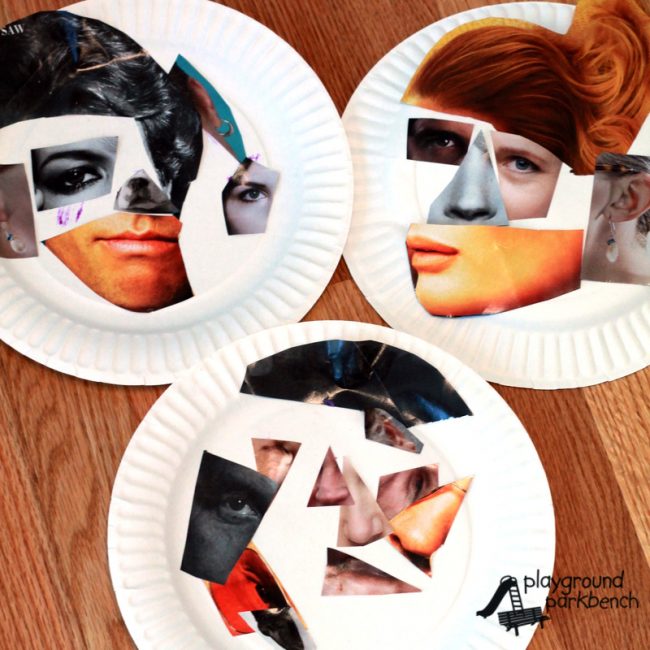
About Picasso and Cubism
Pablo Picasso was born in 1881 in Spain. His father was an art teacher, who exposed him to painting at an early age, and his talent was quickly evident. He studied painting in Barcelona and Madrid, before moving to Paris, the center of the art world during his day. In Paris, Picasso met Matisse. Over time, they evolved from contemporaries, to foes, to friends.
Picasso, along with Georges Braque, are considered to be the pioneers of Cubism, a daring artistic movement from 1904 through the early 1920s. Cubism is often cited as the most influential art movement of the 20th century, inspiring many future modern artists, as well as other artistic fields, like architecture. You can learn more about Cubism on the Art History for Preschool landing page, as well as see the rest of the posts and projects in the series.
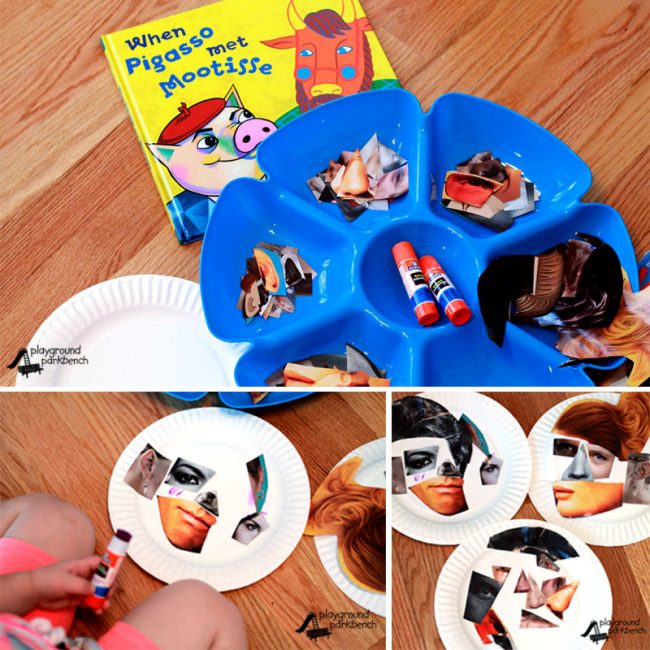
If you enjoyed this post, you might also enjoy last week’s projects featuring Matisse, as well as 40+ Books to Study Great Artists. You can follow along with all the posts in our Art History for Preschool series here, as well as find them all, and countless others from around the web on our Art for Kids board on Pinterest.
Stay tuned for the next project in our series… Exploring Monet’s Water Lilies.
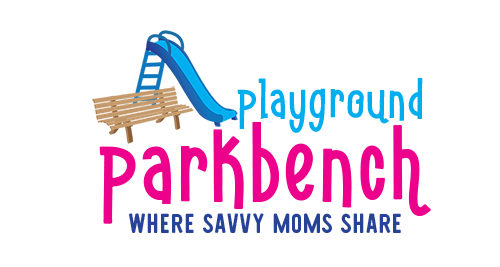

6 comments
LOVE this site. Thanks
So glad you enjoy it! Thanks for stopping by.
[…] you can find all the posts in our Art History for Preschool series here. To date, we have covered Picasso Portraits and Matisse Cutouts. You can also find all the posts in our series on my Art for Kids board on […]
Love this – we had an interesting discussion the other day regarding a Picasso painting – this might be something worth exploring 🙂
It’s a perfect way to explore it for younger artists, especially those who may need a little push outside their comfort zone… I see you have a Ballet Book round-up. Stay tuned – we have Degas coming up soon!
[…] up in our series? Introducing your preschooler to Picasso, one of Matisse’s rivals, friends and […]